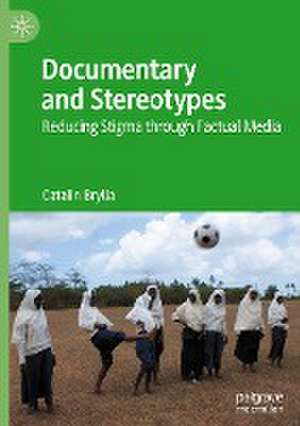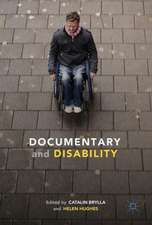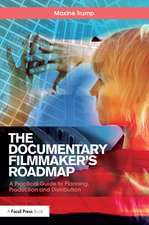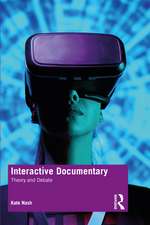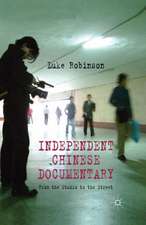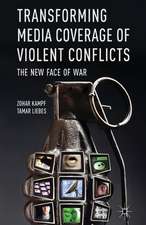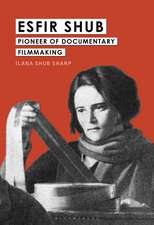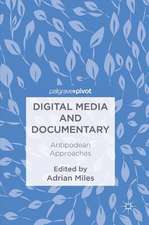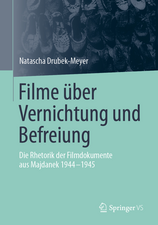Documentary and Stereotypes: Reducing Stigma through Factual Media
Autor Catalin Bryllaen Limba Engleză Hardback – 24 aug 2023
Preț: 731.73 lei
Preț vechi: 892.35 lei
-18% Nou
Puncte Express: 1098
Preț estimativ în valută:
140.03€ • 143.41$ • 116.49£
140.03€ • 143.41$ • 116.49£
Carte tipărită la comandă
Livrare economică 18 martie-01 aprilie
Preluare comenzi: 021 569.72.76
Specificații
ISBN-13: 9783031263712
ISBN-10: 3031263715
Ilustrații: XVI, 327 p. 42 illus., 40 illus. in color.
Dimensiuni: 148 x 210 mm
Greutate: 0.56 kg
Ediția:1st ed. 2023
Editura: Springer International Publishing
Colecția Palgrave Macmillan
Locul publicării:Cham, Switzerland
ISBN-10: 3031263715
Ilustrații: XVI, 327 p. 42 illus., 40 illus. in color.
Dimensiuni: 148 x 210 mm
Greutate: 0.56 kg
Ediția:1st ed. 2023
Editura: Springer International Publishing
Colecția Palgrave Macmillan
Locul publicării:Cham, Switzerland
Cuprins
Part I Understanding Stereotypes.-1 Prologue.- 2 Why Do Stereotypes Exist?.- 3 Narrativising the Other.- Part II Analysing Stereotypes.- 4 Types of Others.- 5 The OIMDA Model.- 6 The OIMDA Model: Blindness Case Study.- Part III Reducing Stereotypes.- 7 Current Strategies.- 8 Perspective-Taking.- 9 Cross-Categorisation.- 10 Recategorisation.- 11 Decategorisation.- 12 Epilogue
Notă biografică
Catalin Brylla is Principal Lecturer in Film and TV at Bournemouth University, UK, where he is Deputy Director of the Centre for the Study of Conflict, Emotion and Social Justice. He also chairs the Diversity, Equity and Inclusion Committee of the Society for Cognitive Studies of the Moving Image, and he has co-edited Documentary and Disability (2017) and Cognitive Theory and Documentary Film (2018).
Textul de pe ultima copertă
This book studies how documentaries, and factual media in general, can contribute to the reduction of social stigma and prejudice. It adopts models from social psychology, media studies and cultural studies and is intended for scholars and media makers who aim to increase social inclusion and diversity by deconstructing harmful boundaries between social groups. Such boundaries may be based on the stereotyping of ethnicity, culture, age, dis/ability, gender and sexual orientation, for example. The first part of the book outlines the functionality of stereotypes as essential processes for social cognition both in real life and during documentary viewing. The second part establishes a classification system for stigmatising media stereotypes and formulates a methodology based on critical discourse analysis to analyse them in narrative and audio-visual representations. The third and final part of the book conceptualises a set of methodologies to reduce stigmatising stereotypes. These methodologies are based on 1) representations that prompt perspectival alignment with screen characters, and 2) the perceived salience of multiple, intersecting social identities.
Catalin Brylla is Principal Lecturer in Film and TV at Bournemouth University, UK, where he is Deputy Director of the Centre for the Study of Conflict, Emotion and Social Justice. He also chairs the Diversity, Equity and Inclusion Committee of the Society for Cognitive Studies of the Moving Image, and he has co-edited Documentary and Disability (2017) and Cognitive Theory and Documentary Film (2018).
Caracteristici
Makes an explicit theoretical connection between the spectatorship of factual media and stigmatising stereotypes Establishes narrative and audio-visual representation methods that reduce stigmatising stereotypes in viewers’ minds Considers the intersection of multiple social identities in media representations
